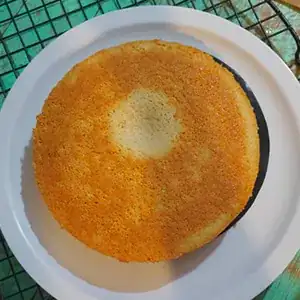I've been baking this recipe for over a year now, flavour and texture are wonderful, the guests love it but half of the time I get these air pockets on the bottom of the cake.
The air pockets appear at the center of the bottom and also at the sides. Sometimes they're barely there, sometimes they're big enough that I'm unsure if i'll serve it to guests (for exemple when they're 3cm height).
Recipe is as follows:
- 150g cashew nuts (roasted, unsalted) chopped in a food processor
- 30g white flour
- 125g sugar
- pinch of salt
- 4 egg whites, lightly beaten with a fork
- 150g butter, heated untill brown
- 1/2 teaspoon vanilla extract
Everything at room temperature.
Preparation is staightfoward: mix dry ingredients, add egg whites, add butter and vanilla. Cooks at 160~180C for 45~50m untill golden brown. Lower temperatures do not make the bubbles disappear.
What causes these air pockets? Has anyone faced a similar issue before?

